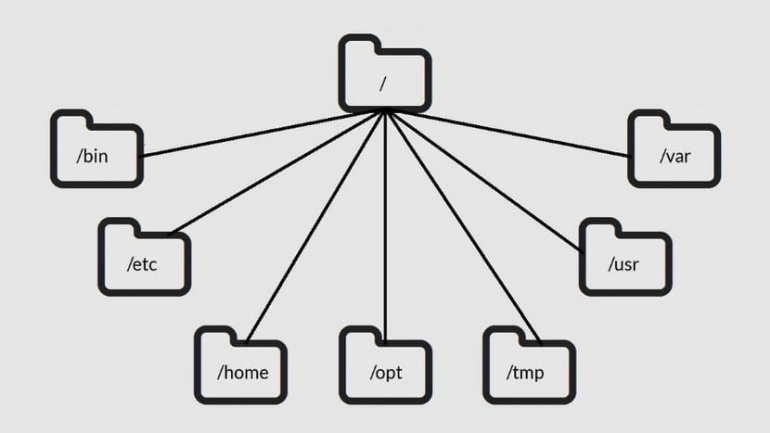A comprehensive guide to directories in Linux

In the Linux operating system, the file system structure is organized into a hierarchy of directories that serve specific purposes. Each directory has its own function and contains related files and subdirectories. In this guide, we will explore the most common directories in Linux and understand their roles in the operating system.
/:
The root directory is the starting point of the file system structure in Linux. All other directories and files are located beneath this directory. It is represented by a forward slash (/). In the root directory, you will find key subdirectories that we will mention below.
/bin:
This directory contains essential binary files, such as system commands and utilities, that are necessary for basic system operation. Here, you will find executables like ls, cp, mv, etc.
/etc:
The /etc directory stores system configuration files. This is where configuration files for the operating system, services, applications, and other global settings are located.
/home:
Each user has their own home directory within /home. This is where personal files and user-specific configurations are stored.
/var:
The /var directory contains variable files that change during normal system operation. This includes log files, databases, mail queues, temporary files, and more.
/usr:
The /usr (Unix System Resources) directory stores programs, libraries, and common system data. Here, you will find user-installed applications and utilities, shared libraries, header files, documentation, etc.
/tmp:
This directory is used for storing temporary files. Files in /tmp are typically deleted upon system reboot.
/dev:
The /dev directory contains special files that represent devices in the system, such as disks, partitions, printers, and other hardware devices.
/boot:
The /boot directory stores files required for system booting, such as the bootloader, the operating system kernel, and other files related to the system startup.
/opt:
The /opt directory is used for installing additional third-party software. Here, you will find applications and packages that are not present in the base distribution of the operating system.
The directory structure in Linux provides a logical and organized layout for the file system. Each directory serves a specific purpose and houses related files and subdirectories. By understanding the function of each directory, Linux users and administrators can navigate and manage their system more efficiently.